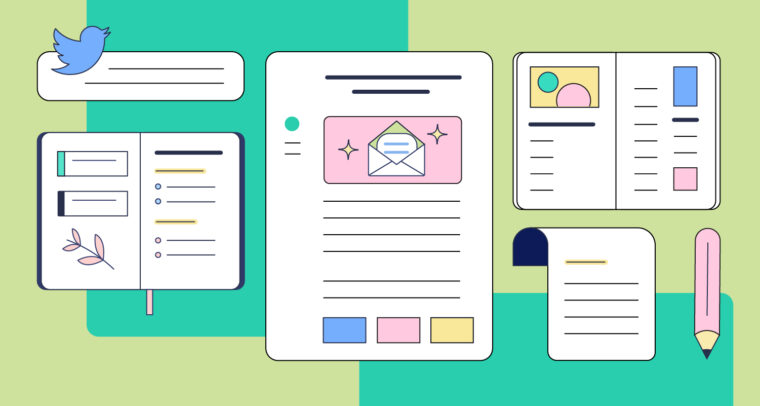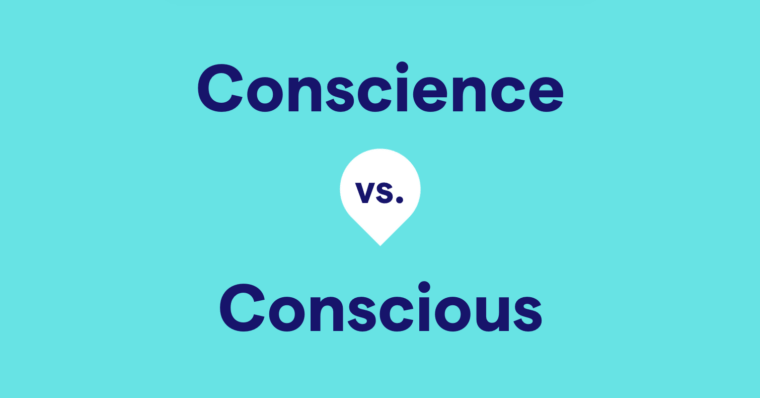
So, you’ve been assigned to write something. Let’s say it’s a presentation. You’ve watched plenty of presentations before, but you’re not quite sure how to write one that effectively communicates your point while telling an engaging, entertaining story.
Or maybe you’ve been asked to write an email. Or assigned a research paper. Whatever kind of writing you’ve been tasked with, working out how to write it is the first step in writing it successfully.
What are you writing (and why?)
Before you even start outlining your work, answer these two important questions:
What am I writing? Is it a short essay, a long research paper, a blog post, a response to a reading you’ve been assigned, content for your website, or something else?
Why am I writing it? Be honest. If it’s an essay or a research paper, you’re writing it to earn a good grade and pass your course. If it’s a blog post, it might simply be to express your personal thoughts and feelings—but, depending on the post, it could also be to educate your blog’s readers and/or to position yourself as an authority in your field. Similarly, you might be writing content for your website to tell the world what you do, but also with the goal of ranking your website higher on search engines.
Once you’ve answered these, you can easily answer another question: Who’s reading your writing? Ultimately, no matter what you write, you’re writing for an audience. Keeping in mind your audience and their reason for reading your work from the earliest stages can help you shape your writing to achieve your goals.
Your professor is reading your work to assess your understanding of the subject matter. Your blog’s followers are perusing your blog to learn about the topic you’re covering and get to know you better. Your website’s visitors are reading it to learn about your brand and what you offer.
Learn the rules for each type of writing
Every kind of writing has its rules. These rules aren’t arbitrary—they exist to make messages as clear as possible.
Before you begin your assignment, take a look at the structure and language conventions typically used in the type of writing you’re doing. You’ll notice things like word choice, paragraph and sentence structure, tone, and even tense can vary widely between different kinds of writing. But the rules generally stay consistent within each type. For example, you’ll find lab reports are nearly always written in the passive voice, whereas blog posts rarely are.
If you’re not familiar with the format—for instance, say you’ve been assigned to write your first press release—do a quick internet search to find examples of press releases and study them.
With some types of writing, the rules are more set in stone than they are in others. Generally, the more formal or professional the type of writing (think: a grant, research paper, or thesis), the more important it is to stick to the established rules. Grammarly can help with that. The Grammarly Editor makes self-editing easy by suggesting improvements for mechanics, grammar, clarity, and more.
With more conversational pieces of writing, like emails, social media posts, and website copy (depending on your brand), sticking to the rules isn’t always the best strategy. This brings us to the next step:
Use language to communicate effectively
Once you’re familiar with the rules, determine if you need to break them. Remember, good writing is all about communicating your point clearly . . . and sometimes, the clearest way to communicate is by breaking the rules.
Think about how you speak. In most of your conversations, you probably use words like “wanna” and “coulda.” You’d never use these words in a research paper where your goal is to support your thesis, but if you’re writing a blog post with the goal of engaging with readers in a friendly, informal tone, you might just wanna.
If you’re not sure if your writing is communicating your point as effectively as it could, the Grammarly Editor can help. Grammarly doesn’t just catch punctuation mistakes and misspelled words—it can also help you write with your specific audience in mind by making suggestions on tone and vocabulary.
Determine the right structure for your writing
While you’re looking at examples to get a feel for the right tone and tense for your writing, take note of their structure. Just like each kind of writing has its own language rules and conventions, it has structure conventions, too. You can easily find templates for pretty much every kind of writing on the internet.
Structure is important to effective writing because it communicates how the reader should interact with your text. Headings introduce new sections and summarize their content. Annotations make it easy to support your points and cite your sources. And line breaks literally give your readers’ eyes a break so they don’t glaze over while working through long blocks of text.
Map out the writing process to determine your important steps
Writing is a process. It’s extremely rare you’ll submit the first draft of your paper or send off a cover letter without making any changes.
All writing follows this basic process:
- Brainstorming: In this stage, you’re not writing yet. You’re just thinking about your writing and walking yourself through the points you’ll make, the conclusions you’ll reach, and how you’ll structure it all. This is where you identify your audience and the best way to speak to them.
- Preparing: This is where you begin building your work. You’re not actually writing yet; you’re gathering sources, outlining your structure, and jotting down key ideas and phrases you brainstormed.
- Drafting: Now you’re ready to write! Flesh out the outline you created with thoughtful words, sentences, and paragraphs (according to the style you determined for this piece). Don’t worry about making mistakes here—you’ll fix those when you revise.
- Revising: Here’s where you hone your draft, smoothing over any mistakes you made. This is also where you assess your structure, align to style, and refine your writing.
- Proofreading: Last, you proofread. Think of this stage as revision-lite. You already worked out any structural and style kinks, now you’re just skimming the surface for typos, misspelled words, and punctuation errors. (Once again, Grammarly comes in handy here.)
Keep in mind, not every piece of writing needs to go through the same steps. And not every piece of writing needs the same amount of emphasis in each step. For example, you probably don’t need to put a whole lot of work into brainstorming and preparing a text message—but before you start tapping, you do think about what you want to say and which emojis to include. Similarly, you might spend the bulk of your time on your research paper in the preparing stage, vetting different sources and carefully tracking down the scholarly articles you need.
Where, when, and how to write
Ready to write? Here’s where it gets personal. Some people need total silence to be able to concentrate on writing. Others can’t concentrate without a little bit of background noise. Some people can open up a word processor and bang out a first draft in one sitting. Others need to outline, organize, and build their writing paragraph by paragraph like a Lego house.
It’s OK if you’re not sure how you write best yet. Experiment! Try writing early in the morning, before you get your day started. Try writing late at night, when all the day’s tasks are complete and you can totally focus on your work. Challenge yourself—if you’ve always written in a word processor, try sketching out your ideas on paper first (or vice versa!). The more you experiment, the more you learn about yourself as a writer. And the more you learn about your own writing habits, the better writer you’ll be.
> Read More: What Type of Writer Are You?
Read your own writing
Finally, read your writing—but, not right away. When you’re finished writing, close the program or put the notebook in your desk drawer and move onto something else. In the best-case scenario, don’t bother with the piece again that day. Give it some time and take another look with “fresh eyes” the next day.
Why? Because when you give yourself some time between writing and reading your work, you give yourself enough perspective to catch things you might not have caught without it. These could be grammar mistakes, typos, incomplete paragraphs, or even just awkward phrasing that can be tightened up.
Sometimes, you don’t have the luxury of enough time to sleep on your work. When that’s the case, read it over anyway with the time you do have. Reading it with fresh eyes is best, but reading it with any eyes is better than not reading it over at all.
Need more guidance on how to write something specific?
No worries, we’ve got you! Check out our in-depth guides to writing pretty much everything, from emails to expository essays.






